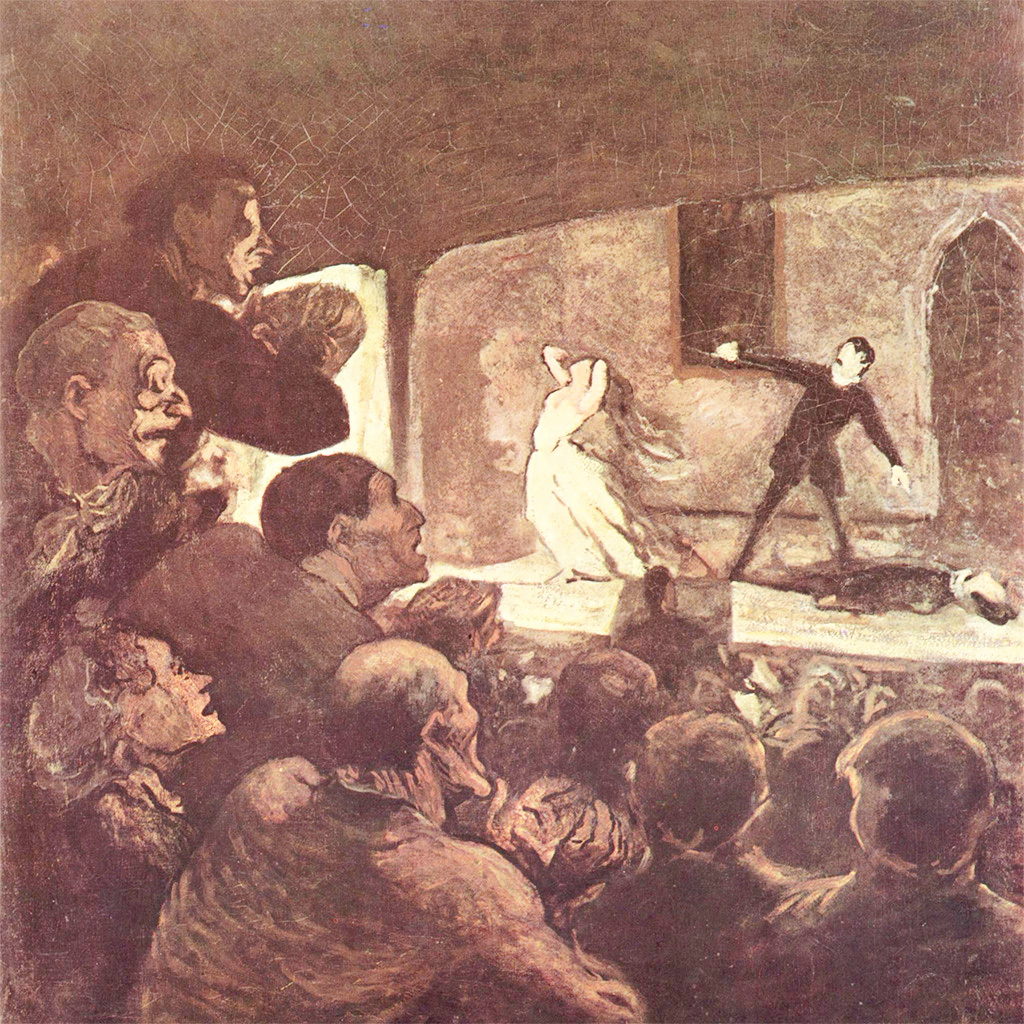NOTE: This is the third piece in a three-part series on The Family: A Proclamation to the World.

One heartbreaking summary of gender inequality in the world today was offered by Barber B. Conable, former president of the World Bank, who noted that “while women comprise half the [global] population, they perform two-thirds of the world’s work, receive one-tenth of the world’s wages, and own one-hundredth of the world’s property.”(1)
Such inequality and mistreatment of women must be heartrending to our Heavenly Parents, whose daughters each of the world’s women are.
In this context, the words of the Savior in Doctrine and Covenants 78:6-7 are haunting, “[I]f ye are not equal in earthly things ye cannot be equal in heavenly things. For if you will that I give unto you a place in the celestial world, you must prepare yourselves by doing the things which I have commanded you and required of you.”
One such command or love-based counsel in our time was offered by 15 united prophets in The Family: A Proclamation to the World, wherein these prophets stated, “In [their] sacred responsibilities, fathers and mothers are obligated to help one another as equal partners” (para. 7). In the ideal of equal partnership lies a beautiful hope that sharply contrasts with the “savage inequalities” that persist across gender (and racial) lines. What does the Gospel offer us instead?
The Doctrine and Theology of the Family: A Source of Eternal Striving and Hope
The renowned Anglican scholar of Mormonism, Douglas Davies, has observed that The Church of Jesus Christ of Latter-day Saints has not only emphasized family but also holds and honors a “veritable theology of family.” The truth of Davies’ statement is seen by turning to the teachings of the current First Presidency:
In the words of President Nelson, “In God’s eternal plan, salvation is an individual matter; exaltation is a family matter.”
Second, as President Dallin H. Oaks said, “Our theology begins with heavenly parents. Our highest aspiration is to be like them.”
Third, President Henry B. Eyring, while discussing the precise Proclamation phrase “Fathers and mothers are obligated to help one another as equal partners,” continued on and taught that “men and women cannot be exalted alone.”
In brief summary, we have three potent, prophetic witnesses that our greatest hope and potential is actualized only when women and men truly unite in Christ.(2)
For several of our BYU students, a highlight of the semester is a (freely and generously given) guest lecture from Sister Melinda Wheelwright Brown regarding her book-length study entitled Eve and Adam: Discovering the Beautiful Balance. Brown has written,
As Eve and Adam exemplify … working interdependently to lead a family toward exaltation is the purpose of marriage. It was never intended to be a solo effort; it wasn’t done alone in the premortal realm; it isn’t meant to be done alone here on earth (though sometimes, of necessity, it is), and it won’t be done alone in the eternities.(3)
However, this labor of “working interdependently” is far from easy. It tends to be forged under tremendous heat. As the Lord said to Israel through the prophet Isaiah in Isaiah 48:10 (and through Nephi in 1 Nephi 20:10), “Behold, I have refined thee … I have chosen thee in the furnace of affliction.” Brown similarly observed in Eve and Adam, “The secret of [marital] success seems to lie in the struggle—more precisely, in the way in which we approach and respond to the struggle.”(4)
Over the past 25 years, the American Families of Faith project has interviewed “exemplary” marriage partners from a variety of races, religions, and regions. One faithfully devoted father named Earl explained, “[In strong marriages], the troubles will help them grow close. We had a few crises [but] we just pulled together, and we got through it, and it drew us closer together as a unit.”
The insights of Isaiah, Brown’s Eve and Adam, and Earl all seem to relate to the observation of the late psychiatrist Viktor Frankl (1984), who wrote in Man’s Search for Meaning:
If architects want to strengthen a decrepit arch, they increase the load which is laid upon it, for thereby, the parts are joined more firmly together…. What [a person or a marriage] actually needs is not a tensionless state but rather the striving and struggling for a worthwhile goal, a freely chosen task (p. 127, emphasis added).
One marital research team has noted that “it might be proposed that one key difference between weak or failed marriages and strong, enduring marriages is that in the latter, the wife and husband ‘join more firmly together’ when the loads of life come, instead of moving away from one another.”(5)
Latter-day Saint professor Valerie Hudson (Cassler) has observed in connection with equal partnership, the idea of women and men unifying (even “forging”) as follows:
We were meant to win together. As the two halves of humanity forge a truly equal partnership at all levels of society, female contributions will not only be valued equally with men’s but will be honored as the necessary counterpart to men’s thinking without distorting that which is unique to each.(6)
Some Brief Notes on What Equal Partnership Is … and Is Not
Equal partnership can be enacted in a variety of ways. Some find it meaningful to have both partners participate fully in each domain of life (e.g., housework, childcare, and paid employment), and there are associated benefits to this approach.(7) However, this “sameness” approach is not always achievable or preferable. Whether these domains are shared or equally divided, certain underlying principles are important, such as ensuring that each partner has an equal voice and shares power (as opposed to exerting coercive control) in the relationship. Former General Relief Society President Jean B. Bingham warned,
During the time between that marvelous beginning in the Garden of Eden and now, the adversary has been quite successful in his goal to divide men and women in his attempts to conquer our souls. … Satan incites comparison as a tool to create feelings of being superior or inferior, hiding the eternal truth that men’s and women’s innate differences are God-given and equally valued (p. 61).
Continuing, Sister Bingham taught,
Unity [between women and men] is essential to the divine work we are privileged and called to do, but it doesn’t just happen. It takes effort and time to really counsel together—to listen to one another, understand others’ viewpoints, and share experiences—but the process results in more inspired decisions.
So, competition and devaluing … no. Discussion, dialogue, and mutual empowerment … yes.
As we have observed elsewhere, “[I]nequality in marriage has been defined as one spouse having dominance in decision-making processes or, even further, demonstrating a lack of respect for the other partners’ autonomy or input.”(8) It is important to remember that “When partners engage in power struggles and start trying to win power and control in the relationship, they often are acting from their own insecure views of self and of their partner.”(9) Thus, when we find ourselves falling short and engaging in such power struggles, we can benefit by self-reflecting, taking responsibility for our own insecurities, and remembering to view our spouse as a partner rather than an adversary—someone to have power with rather than power over. (10) With time and trust, such episodes can diminish and open the door for partnered and collaborative work.
Professor Hudson and former Director of the BYU School of Family Life, Rick Miller, explained that “In an equal partnership, spouses continue to discuss the issue and negotiate until they agree on a decision.”(11)
Who “Wins” in Equal Partnership?
In exploring the question of who “wins” in equal partnership, the voices of the prophets and the best social science align. This dialogic and respectful approach yields better decisions where every family member wins. First, President Russell M. Nelson taught:
The heavens are just as open to women who are endowed with God’s power flowing from their priesthood covenants as they are to men who bear the priesthood. … I praise that man who deeply respects his wife’s ability to receive revelation and treasures her as an equal partner in their marriage (emphasis in original).
Given the approach of husband and wife “counsel[ing] together in love and righteousness,” the pattern of dialoging together (often at length and over time) and seeking the guidance of the Lord along the way yields far better and more unified decisions.
Elder L. Whitney Clayton reflected, “I have observed that in wonderful, happy marriages, husbands and wives treat each other as equal partners.” From a social science perspective, we add a harmonizing note. Across the many interviews in the American Families of Faith project, there is an evident equality as one glances at most of the transcripts. These imperfect but exemplary partners take turns responding to questions, and they very rarely interrupt each other. Their responses to questions regarding their strong (on average, 20-year) marriages tend towards equality, without the dominance of either wife or husband. They seem to sing a duet and resist the urge to be “diva soloists.” This grace has benefitted not only their marriages but their children.
As Professors Hudson and Miller (2012) summarize, “Equal partners are generally better parents. Parents with less relationship equality are less likely to work together as a team in parenting their children.”(12) Indeed, “recent social science research findings confirm that better physical and emotional health, better marital relationships, and better parenting and outcomes for children are the fruits of equal partnership in marriage.”(13) (Also see Gibby & Gibby, 2024, for a recent review).(14)
In short, everyone wins when the prophetic, “equal partnership” counsel of the Proclamation is followed. Indeed, President Eyring, like the Proclamation, took the benefits of righteously unified marriage further than the home. Speaking to international leaders in Rome, he taught that “a man and a woman, united in marriage, have a transcendent power to create happiness for themselves, for their family, and for the people around them.”
President Nelson has similarly taught, “Marriage brings greater possibilities for happiness than does any other human relationship.”
One of the fathers interviewed for the American Families of Faith project shared a note that he had written to his eight children regarding their mother—his devoted partner of more than 40 years. It read,
What is eternal marriage, after all? I only know that if our marriage cannot exist eternally, I don’t care if I do or not. I can imagine no heaven without it; [and] with it, even Hell would be tolerable.
We close with an apostolic promise from Elder Ulisses Soares in his address entitled “In Partnership with the Lord,” who said to the women and men of the Church of Jesus Christ:
I testify to you that as we—women and men—work together in a true and equal partnership, we will enjoy the unity taught by the Savior as we fulfill the divine responsibilities in our marriage relationships. I promise you, in the name of Christ, that hearts will be “knit together in unity and in love one towards another,” we will find more joy in our journey to eternal life, and our capacity to serve one another and with one another will multiply significantly.
May we unite with both the Lord and with our covenanted partner and claim these promised blessings.
Three Brief Marital Insights from President Nelson
In a 2006 General Conference address entitled “Nurturing Marriage,” President Russell M. Nelson offered three brief, practical suggestions to wives and husbands. He taught, “My suggestions use three action verbs: to appreciate, to communicate, and to contemplate.
1. To appreciate—to say “I love you” and “thank you.
2. [T]o communicate well with your spouse. Couples need private time to observe, to talk, and really listen to each other. They need to cooperate—helping each other as equal partners.
3. My third suggestion is to contemplate. This word has deep meaning. It comes from Latin roots: con, meaning “with,” and templum, meaning “a space or place to meditate.” It is the root from which the word temple comes. If couples contemplate often—with each other in the temple—sacred covenants will be better remembered and kept.”
References:
(1) Valerie Hudson as cited in Brown, M. W. (2020). Eve and Adam: Discovering the beautiful balance. Deseret Book. (p. 7).
(2) While the Proclamation clearly emphasizes marriage between a man and a woman, which will be our focus here, we note that many are now in different relationship configurations (e.g., same-sex marriages). Across these different types of relationships, equal partnership is also associated with beneficial outcomes, while inequality can be harmful.
(3) Brown, M. W. (2020). Eve and Adam: Discovering the beautiful balance. Deseret Book. (p. 141).
(4) Ibid (p. 120).
(5) Marks, L. D., & Dollahite, D. C. (2017). Religion and families. Routledge. (p. 71).
(6) Hudson, V. M ., et al. (2012). Sex and World Peace. Columbia University Press. (p. 200, emphasis added).
(7) Gibby, A. L., & Gibby, J. G. (2024). Equal partnership in marriage. In L. J. Nelson & S. M. Coyne (eds.), Family life: Scholarly insights on sacred truths (pp. 138-157). BYU Studies. (pp. 140-143)
(8) Gibby & Gibby, 2024. (p. 145).
(9) Gibby & Gibby, 2024 (p. 146).
(10) Ibid.
(11) Hudson, V. M., & Miller, R. B. (2012). Equal partnership between men and women in families. In A. J.Hawkins, D. C. Dollahite, & T. W. Draper (Eds.), Successful marriages and family life (pp. pp. 38-48). BYU Studies. (p. 44).
(12) Hudson & Miller, 2012 (p. 43).
(13) Hudson & Miller, 2012 (p. 44).
(14) Gibby, A. L., & Gibby, J. G. (2024). Equal partnership in marriage. In L. J. Nelson & S. M. Coyne (eds.), Family life: Scholarly insights on sacred truths (pp. 138-157). BYU Studies.

















